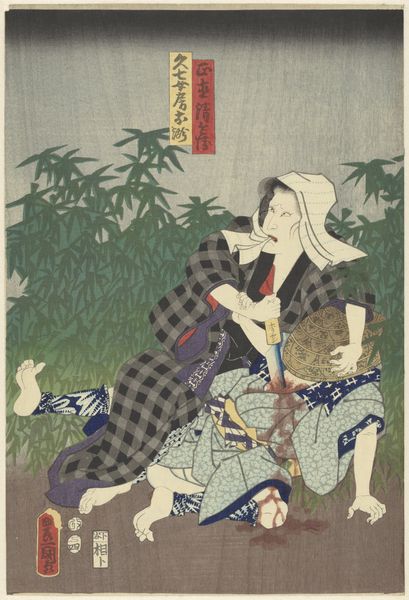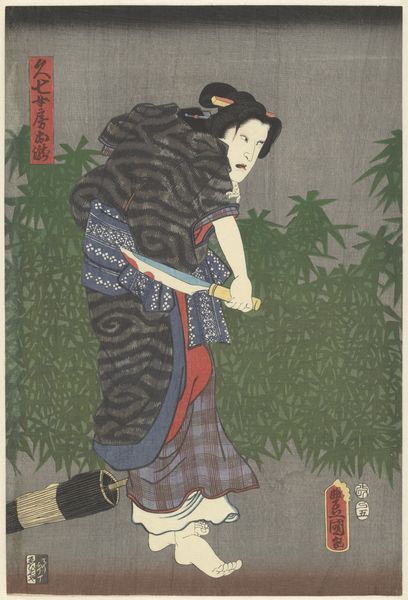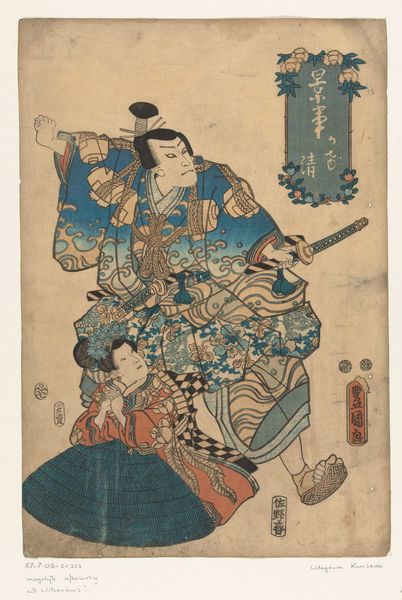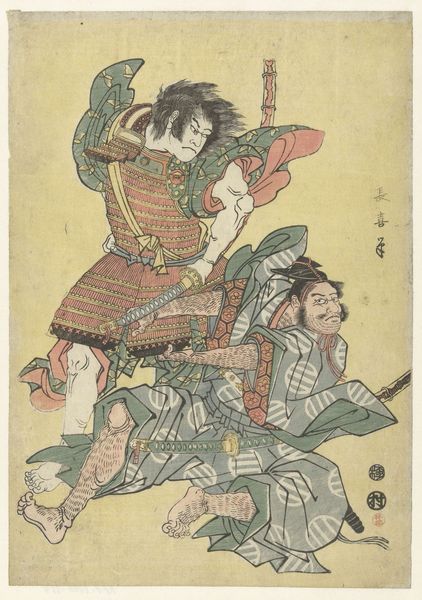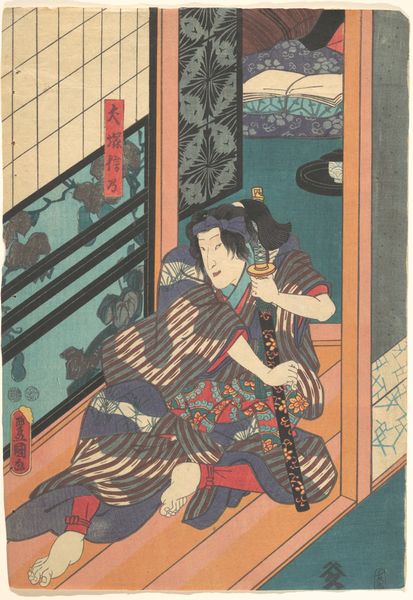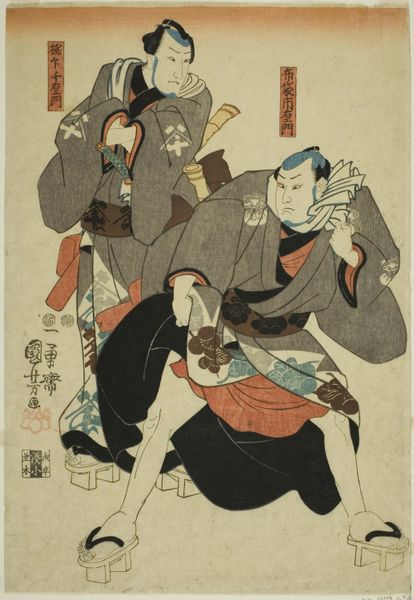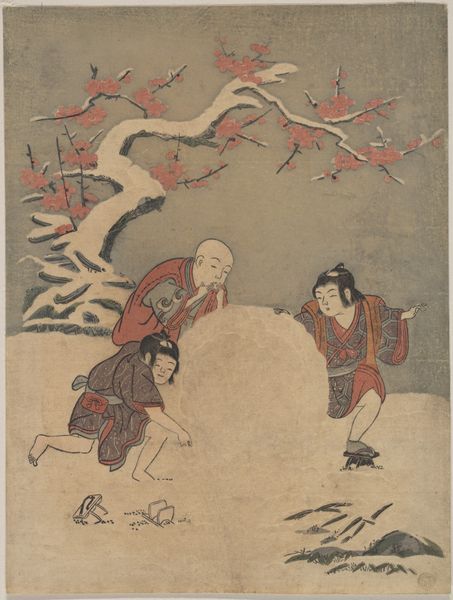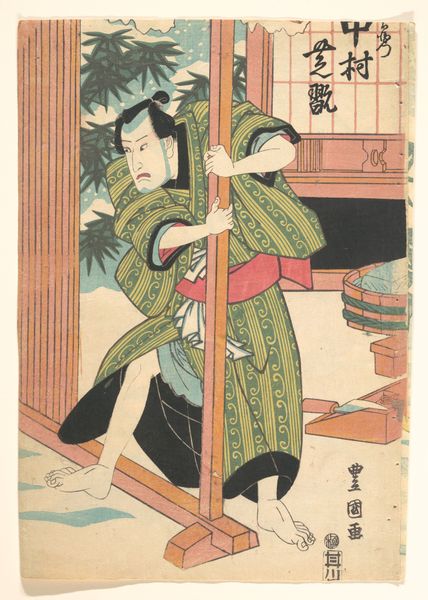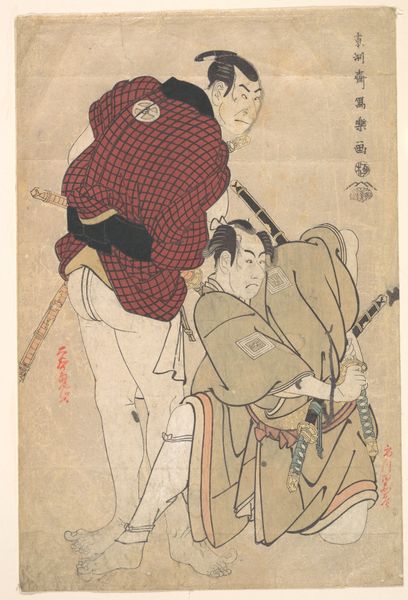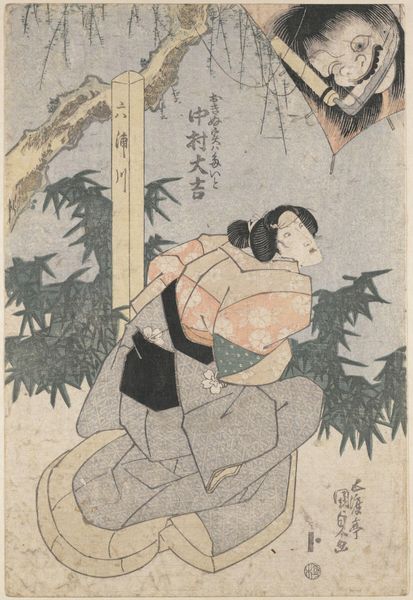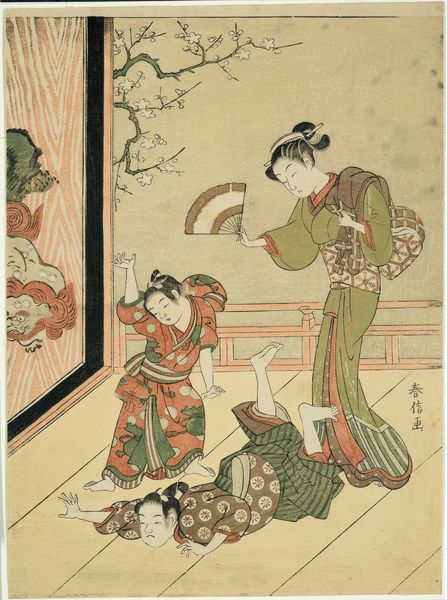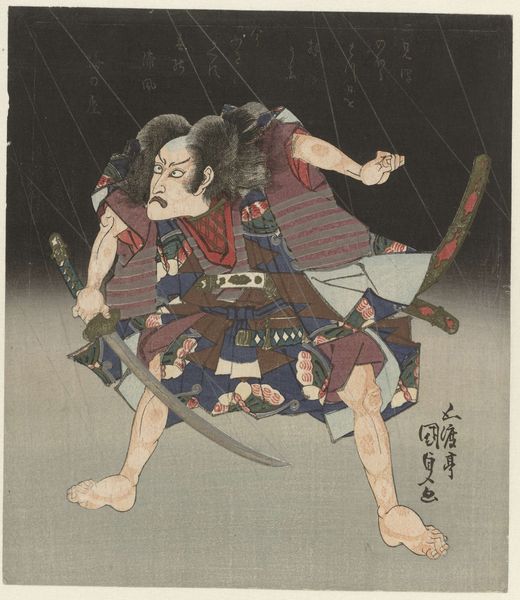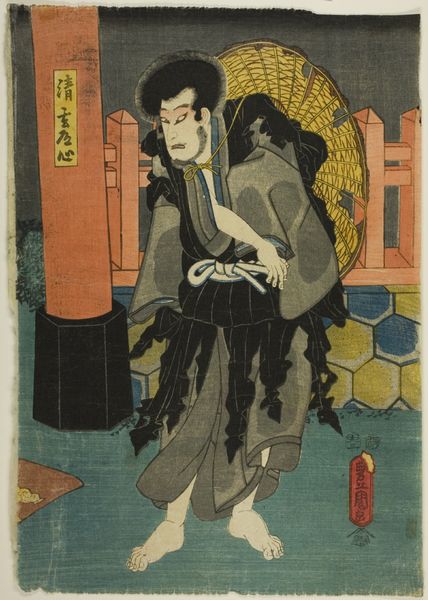
print, woodcut
#
narrative-art
# print
#
asian-art
#
ukiyo-e
#
figuration
#
woodcut
#
history-painting
Dimensions: height 366 mm, width 250 mm
Copyright: Rijks Museum: Open Domain
Curator: Hello, and welcome. I'm delighted to introduce a rather striking work titled "Seibei vermoord door Kyūshichi," created in 1857 by Utagawa Kunisada. It's a woodcut print housed here at the Rijksmuseum. Editor: Well, "striking" is one word for it. It’s certainly… intense! The scene jumps right out, a raw and immediate depiction of violence frozen in time. So dramatic, and unexpectedly graphic! Curator: Indeed. Kunisada was a master of ukiyo-e, "pictures of the floating world," though this image is far from the gentle landscapes and courtesans one might typically associate with that genre. It’s actually more accurately considered a history painting, depicting a specific narrative moment. The visible wounds become potent symbols, referencing a larger, perhaps well-known story that resonated with his audience. Editor: What stands out to me is how unflinching it is. There’s no romanticizing death here; the starkness almost feels like a commentary on the brutality of these historical events. And those colours—the vivid red against the patterns of the kimonos—create this weirdly beautiful, if disturbing, contrast. Curator: That contrast is vital. The patterns and fabrics of the kimonos point to the characters' social standing, contrasting with the savagery of their actions. Notice also how Kunisada uses the stylized portrayal of the characters—the theatrical expression of the murderer, and the exaggerated gestures—as codified references that would have immediately conveyed specific aspects of the story to contemporary viewers. It transcends pure aestheticism and aims at powerful emotional evocation and social commentary. Editor: Absolutely, you can almost feel the weight of history and tradition bearing down on the scene. I suppose, despite its gruesomeness, it does reveal deeper layers of Japanese society and storytelling. Makes you wonder what they wanted us, the viewers, to really "see". Curator: Precisely. By examining Kunisada’s stylistic choices, the narrative context, and the socio-cultural symbolism, we gain insight into the complexities of that era and appreciate the rich visual language employed within this seemingly straightforward depiction of violence. Editor: I came expecting a typical woodcut, and instead was sideswiped by a raw glimpse into history, morality and mortality! I think Kunisada has me hooked! Curator: That perfectly captures the essence of Kunisada’s genius: using popular forms to explore complex human themes. Thank you for sharing your insights!
Comments
No comments
Be the first to comment and join the conversation on the ultimate creative platform.
